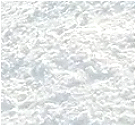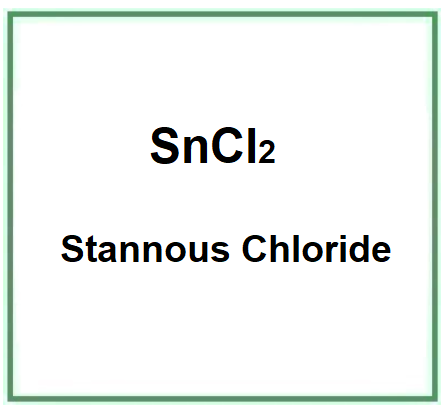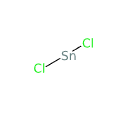E512 (Stannous Chloride) is a chemical compound, obtained by treating stannic chloride with granulated tin.
It appears as a white crystalline powder.

What it is used for and where
Food
Ingredient listed in the European Food Additives List as E512, antioxidant and in the Colour Index International as CI 77864.
Cosmetics
Reducing agent. Ingredient that facilitates permanent hair waving by adjusting the pH to an optimal level.
Medical
Can facilitate neuromuscular transmission by accelerating the release of transmitter from nerve terminals (1)
Other uses
- In nuclear medicine, stannous chloride is used as a reducing agent of technetium-99m, a radionuclide used to mark different cells and molecules (2).
- Reducing agent for reducing aromatic nitro compounds.
- Effective for synthesising silver NP.
- Acid catalyst.
- Mild reagent for deprotection of acetals.
Safety
The EFSA Panel on Food Additives determined that absorption of stannous chloride from the gastrointestinal tract is low, there is no concern regarding carcinogenicity and genotoxicity. Gastrointestinal irritation has been reported in humans after ingestion of a bolus dose of 40 mg Sn. The Panel concluded that stannous chloride (E512) is of no safety concern in currently authorised use and use levels (3).

- Molecular Formula SnCl2 Cl2Sn
- Molecular Weight 189.61
- CAS 7772-99-8
- UNII R30H55TN67
- EC Number 231-868-0
- IUPAC dichlorotin
- InChl=1S/2ClH.Sn/h2*1H;/q;;+2/p-2
- InChl Key AXZWODMDQAVCJE-UHFFFAOYSA-L
- SMILES Cl[Sn]Cl
- MDL number MFCD00011241
- PubChem Substance ID 329752041
- ChEBI
- RTECS XP8700000
- ICSC 0955
- UN 3260 1759
Synonyms:
- Tin(II) chloride
- Dichlorotin
References_____________________________________________________________________
(1) Silva, C.R., Oliveira, M.B.N., Melo, S.F., Dantas, F.J.S., De Mattos, J.C.P., Bezerra, R.J.A.C., Caldeira-de-Araujo, A., Duatti, A. and Bernardo-Filho, M., 2002. Biological effects of stannous chloride, a substance that can produce stimulation or depression of the central nervous system. Brain research bulletin, 59(3), pp.213-216.
(2) Yousef, M.I., 2005. Protective role of ascorbic acid to enhance reproductive performance of male rabbits treated with stannous chloride. Toxicology, 207(1), pp.81-89.
(3) EFSA Panel on Food Additives and Nutrient Sources added to Food (ANS), Younes, M., Aggett, P., Aguilar, F., Crebelli, R., Dusemund, B., Filipič, M., Frutos, M.J., Galtier, P., Gott, D. and Gundert‐Remy, U., 2018. Re‐evaluation of stannous chloride (E 512) as food additive. EFSA Journal, 16(6), p.e05295.
![]() E512
E512 




